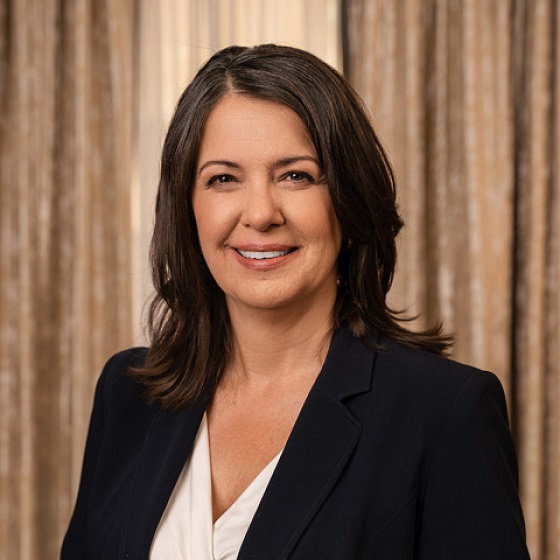Entertainment
Legendary Blues Band on their way to Red Deer!

From The Central Music Festival Society – Click to buy tickets now.
By Mark Weber
The Legendary Downchild Blues Band 50th Anniversary Tour
Few absolutely nail the magic and mystery of the blues quite like the Downchild blues band, a legendary group that is marking 50 trailblazing years in the music biz.
Presented by the Central Music Festival Society, Downchild is slated to perform at Red Deer’s Memorial Centre Oct. 30th.
As noted in their bio, Downchild catapulted to international acclaim as inspiration for Dan Aykroyd and the late John Belush’s smash film The Blues Brothers. In fact, two Downchild tunes – Shotgun Blues and (I Got Everything I Need) Almost were covered on the Blues Brothers 1978 disc Briefcase Full of Blues.
The band is led by founder Donnie ‘Mr. Downchild’ Walsh on guitar and harmonica, singer Chuck Jackson who also plays harmonica, tenor sax man Pat Carey, Michael Fonfara on keyboards, Gary Kendall on bass and drummer Mike Fitzpatrick.
Jackson, who signed on with Downchild 30 years ago, noted that the band made tremendous headway right from the get-go as there weren’t a lot of blues bands criss-crossing the continent in those early days.
“Everyone can identify with the blues,” he added of the genre’s unfading and historic appeal. “Everyone has their bad days in different ways. And originally, blues music was meant to help you get over your blues and pick you up and to help you forget about your troubles,” he said, noting that Downchild is known for the band’s ‘jump blues’ style.
Essentially, it’s an up-tempo feel that weaves in elements of swing, and also often features sax or brass.
As to the band’s astounding longevity, Jackson points out that really, the essence of the group hasn’t changed a whole lot over the years. “The band knows what it does. We write all our own music, and of course a lot of it has to do with our leader Donnie Walsh ‘Mr. Downchild’.”
Also, there’s a cohesiveness amongst the members that keeps the vision front and centre as well. “We’ve got a great relationship, and we just stay true to what we are. We play the blues, we don’t (stray) from that, and we’ve got great fans. Really, we have generations of fans – we’ve got grandparents that bring out their grandchildren to see us!
“We’ve played everywhere across Canada and beyond – it’s been amazing, it’s really opened up the blues all around the world.
“We’ve played in Central America, the United States, Canada, Europe – there was a time I never had any idea I would get to play the blues in Costa Rica or Jamaica or Norway or France.”
As mentioned, it’s that connection to their loyal fan base that also means the world to them. “We sign autographs and CDs after the shows and everyone is so happy that we are still continuing after 50 years,” he noted with gratitude. “They will tell us stories about how we played at their high school graduation, or how we played at a company Christmas party – so we’ve really got a great, great fan base and it’s always wonderful to see everyone.”
As for Jackson, that vocal ability started to surface when he was just a kid – singing in church choirs.
There were the jams and just getting together with like-minded folks to play and sing and pass the time. “People entertained themselves – we didn’t have 120 stations on the TV.
“Lots of families had instruments and would sit around and play. People would come over and dance, so it was quite different then compared to what it’s like nowadays.”
Jackson was raised by his grandparents, pointing out that his grandpa played the spoons and was also a square dance caller. So music was in the blood, and those early influences left an indelible mark on a young Jackson.
It wasn’t long before he was honing his own skills as both a vocalist and a harmonica player, too. “That was my introduction to music. When I was in Grade 9, of course we were all wanting to be the next Beatles,” he added with a laugh. He started his first band with a few high school buddies, and it was around the time he was 16 that he discovered the blues.
A new path was struck.
“I had to check into it, so I started buying old blues albums,” he said.
These days, Jackson couldn’t imagine a better road to have traveled, what with the explosive shows, the joy of collaboration, the life-changing friendships and opening for legendary artists from B.B. King to the Bee Gees to Joe Cocker.
They also kicked off this year’s anniversary shows with a performance at the Toronto Jazz Festival in front of thousands that also included none other than Aykroyd and Paul Shaffer.
“It’s everything. It just keeps you going. People tell us what we add to their lives, and you just can’t replace that wonderful feeling. Sure, we have our days when we spend the whole day on a bus and we are dead tired. But as soon as you get onstage, you see the audience and you just light up.
“Being able to play the music I love and entertain the wonderful people across Canada and around the world is certainly a dream come true and one I will continue to follow.
“We are just going to keep going until we can’t anymore.”

Click to buy tickets now
For more information, click here.
Entertainment
Pedro Pascal launches attack on J.K. Rowling over biological sex views

 MxM News
MxM News
Quick Hit:
Pedro Pascal, star of HBO’s The Last of Us, ignited backlash this week after publicly hurling an expletive-laced insult at author J.K. Rowling in response to her support for a landmark UK ruling that upheld the legal definition of sex as biological. Rowling celebrated the decision, which affirms the rights of women to single-sex spaces—a view shared by many who advocate for the safety and integrity of women’s rights. Pascal, a vocal progressive and LGBTQ+ activist, labeled Rowling a “heinous loser,” aligning himself with calls to boycott HBO’s upcoming Harry Potter reboot.
Pedro Pascal calls J.K. Rowling a “heinous loser” after she celebrated the Supreme Court’s ruling regarding trans women’s legal identities. pic.twitter.com/LEGMD79PjQ
— Pop Base (@PopBase) April 24, 2025
Key Details:
-
Pedro Pascal responded on Instagram to Rowling’s post celebrating a UK court ruling that legally defined “sex” as biological.
-
Pascal echoed an activist’s call for a fan-led boycott of the Harry Potter reboot, saying Rowling’s stance was “heinous LOSER behavior.”
-
HBO has downplayed concerns of a boycott, citing the blockbuster success of Hogwarts Legacy despite similar activist campaigns.
Diving Deeper:
The latest clash in the culture war surrounding Harry Potter author J.K. Rowling and the trans activist movement reached a new level of hostility this week when actor Pedro Pascal, a key face of HBO’s entertainment slate, stooped to name-calling on social media. His remarks came in response to Rowling’s defense of the United Kingdom’s recent court decision, which reaffirmed that sex, under British law, means biological sex—a ruling many women’s rights advocates hailed as a long-overdue step toward protecting vulnerable female spaces such as shelters, hospital wards, and sports.
Rowling, whose views on the importance of distinguishing biological sex from gender identity have made her a target of trans activists for years, posted a pointed but unapologetic reaction: “I love it when a plan comes together.” She added, “I get the same royalties whether you read [my books] or burn them. Enjoy your marshmallows!”
In the comments of a post by activist Tariq Ra’ouf—who had attacked Rowling and promoted a boycott of HBO’s Harry Potter reboot—Pascal added his own vulgar commentary: “Awful disgusting SHIT is exactly right. Heinous LOSER behavior.” While Pascal did not explicitly mention Harry Potter, the post he endorsed included calls to tank all future franchise content, including theme parks and merchandise.
Pascal’s involvement with HBO places the network in a difficult position. As the Emmy-nominated co-lead of The Last of Us, one of HBO’s crown jewels, Pascal’s comments are being widely interpreted as an implicit endorsement of the boycott. While HBO has attempted to downplay the activist push, the tension is palpable. Casey Bloys, HBO’s chief content officer, previously noted that the 2023 video game Hogwarts Legacy, which also faced calls for boycotts due to Rowling’s views, still became the year’s top-selling game.
Pascal’s activism is personal as well as political. His sister, Lux Pascal, publicly transitioned in 2021, and he has frequently signaled support for trans activism. At the UK premiere of Marvel’s Thunderbolts, Pascal wore a shirt that read “Protect the Dolls,” a slogan popularized in trans activist circles.
Rather than “heinous,” Rowling’s remarks represent a reasoned defense of biological reality and a pushback against an increasingly aggressive ideology that demands conformity and punishes dissent. Her critics, like Pascal, resort to vulgarity and character attacks instead of engaging with the substance of her argument. But Rowling has stood firm in supporting women’s rights and advocating for clarity in laws that impact everything from sports to safety in single-sex spaces—positions grounded in truth, not hate.
Business
California planning to double film tax credits amid industry decline

From The Center Square
By
California legislators have unveiled a bill to follow through with the governor’s plan of more than doubling the state’s film and TV production tax credits to $750 million.
The state’s own analysis warns it’s likely the refundable production credits generate only 20 to 50 cents of state revenue for every dollar the state spends, and the increase could stoke a “race to the bottom” among the 38 states that now have such programs.
Industry insiders say the state’s high production costs are to blame for much of the exodus, and experts say the cost of housing is responsible for a significant share of the higher costs.
The bill creates a special carve-out for shooting in Los Angeles, where productions would be able to claim refundable credits for 35% of the cost of production.
California Gov. Gavin Newsom announced his proposal last year and highlighted his goal of expanding the program at an industry event last week.
“California is the entertainment capital of the world – and we’re committed to ensuring we stay that way,” said Newsom. “Fashion and film go hand in hand, helping to express characters, capture eras in time and reflect cultural movements.”
With most states now offering production credits, economic analysis suggests these programs now produce state revenue well below the cost of the credits themselves.
“A recent study from the Los Angeles County Economic Development Corporation found that each $1 of Program 2.0 credit results in $1.07 in new state and local government revenue. This finding, however, is significantly overstated due to the study’s use of implausible assumptions,” wrote the state’s analysts in a 2023 report. “Most importantly, the study assumes that no productions receiving tax credits would have filmed here in the absence of the credit.”
“This is out of line with economic research discussed above which suggests tax credits influence location decisions of only a portion of recipients,” continued the state analysis. “Two studies that better reflect this research finding suggest that each $1 of film credit results in $0.20 to $0.50 of state revenues.”
“Parks and Recreation” stars Rob Lowe and Adam Scott recently shared on Lowe’s podcast how costs are so high their show likely would have been shot in Europe instead.
“It’s cheaper to bring 100 American people to Ireland than to walk across the lot at Fox past the sound stages and do it and do it there,” said Lowe.
“Do you think if we shot ‘Parks’ right now, we would be in Budapest?” asked Scott, who now stars in “Severance.”
“100%,” replied Lowe. “All those other places are offering 40% — forty percent — and then on top of that there’s other stuff that they do, and then that’s not even talking about the union stuff. That’s just tax economics of it all.”
“It’s criminal what California and LA have let happen. It’s criminal,” continued Lowe. “Everybody should be fired.”
According to the Public Policy Institute of California, housing is the single largest expense for California households.
“Across the income spectrum, 35–44% of household expenditures go to covering rent, mortgages, utilities and home maintenance,” wrote PPIC.
The cost of housing due to supply constraints now makes it nearly impossible for creatives to get their start in LA, said M. Nolan Gray, legislative director at housing regulatory reform organization California YIMBY.
“Hollywood depends on Los Angeles being the place where anybody can show up, take a big risk, and pursue their dreams, and that only works if you have a lot of affordable apartments,” said Gray to The Center Square. “We’ve built a Los Angeles where you have to be fabulously wealthy to have stable and decent housing, and as a result a lot of folks either are not coming, or those who are coming need to paid quite a bit higher to make it worth it, and it’s destroying one of California’s most important industries.”
“Anybody who arrived in Hollywood before the 2010s, their story is always, ‘Yeah, I showed up in LA, and I lived in a really, really dirt-cheap apartment with like $10 in my pocket.’ That just doesn’t exist anymore,” continued Gray. “Does the Walt Disney of 2025 not take the train from Kansas City to LA? Almost certainly not. If he goes anywhere, he goes to Atlanta.”
-

 2025 Federal Election2 days ago
2025 Federal Election2 days agoMark Carney: Our Number-One Alberta Separatist
-

 2025 Federal Election2 days ago
2025 Federal Election2 days agoCanada is squandering the greatest oil opportunity on Earth
-

 International2 days ago
International2 days agoU.S. Army names new long-range hypersonic weapon ‘Dark Eagle’
-

 Alberta5 hours ago
Alberta5 hours agoPremier Danielle Smith responds to election of Liberal government
-

 Business1 day ago
Business1 day agoOttawa’s Plastics Registry A Waste Of Time And Money
-

 Business1 day ago
Business1 day agoNet Zero by 2050: There is no realistic path to affordable and reliable electricity
-

 Business2 days ago
Business2 days agoTrump demands free passage for American ships through Panama, Suez
-

 International1 day ago
International1 day agoConclave to elect new pope will start on May 7






